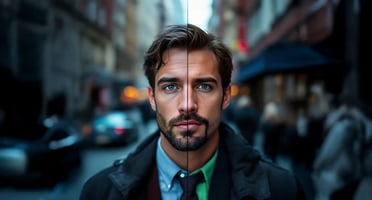Let's talk about a job title that sounds like a superhero, but often ends up feeling more like a...
Marketing's Hall of Shame: Epic Fails & What We Learned

Let’s take an awkward walk down memory lane and look back at some of history’s most notorious marketing missteps. Why do this? Because while success offers its lessons, failure is the one that sticks with you. Buckle up, grab your favorite beverage (maybe not a Pepsi), and let's get schooled by the best of the worst.
1. The Pepsi-Kendall Jenner "Peace Offering" (2017)
The Blunder: Ah, the infamous protest ad. Pepsi thought, "Hey, let's tap into youth culture! What's cooler than a protest for social change?" So, they cooked up a commercial where Kendall Jenner calms a tense protest by handing a police officer a can of Pepsi. Problem solved, right? Peace achieved, one fizzy drink at a time!
What Went Wrong (Everything): The internet erupted. Critics slammed it for trivializing serious social justice movements, making light of police brutality, and suggesting a soda could fix systemic issues. It was tone-deaf, misguided, and frankly, insulting to anyone who's ever actually been involved in a protest. Pepsi pulled the ad faster than you can say "missed the mark."
What We Learned:
-
Context is King (and Queen, and the Entire Royal Family): Before you jump on a trending topic, understand its nuances. Deeply. Completely. Then, ask yourself if your brand genuinely has a place in that conversation without looking opportunistic or insensitive.
-
Don't Simplify Complex Issues: Real-world problems require real-world solutions, not carbonated sugar water. Seriously.
-
Authenticity Over Everything: Audiences can sniff out disingenuous attempts to "connect" from a mile away.
2. New Coke: Because Why Fix What Ain't Broke? (1985)
The Blunder: Coca-Cola, in a fit of competitive panic (thanks, Pepsi!), decided its beloved, iconic formula needed an update. They launched "New Coke," a sweeter version designed to appeal to younger palates. They spent millions on R&D, taste tests, and a massive launch campaign.
What Went Wrong (A Lot of Nostalgia): Turns out, people really loved the original Coke. Like, passionately. The backlash was immediate and fierce. Consumers hoarded old cans, staged protests, and deluged Coke with angry calls and letters. It was less about the taste and more about the perceived betrayal of an American institution. After just 79 days, New Coke was pulled, and "Coca-Cola Classic" triumphantly returned.
What We (Grudgingly) Learned:
-
Know Your Audience's Emotional Connection: Sometimes, a product isn't just a product; it's a memory, a comfort, a part of their identity. Mess with that at your peril.
-
Don't Underestimate the Power of Nostalgia: If something works, and people love it, think ten times before you "improve" it.
-
Listen to the Roar (of the Crowd): When your customers are practically rioting, it's time to pivot. Fast.
3. McDonald's #McDStories (2012)
The Blunder: McDonald's social media team had a brilliant idea: "Let's ask our loyal customers to share heartwarming stories about their experiences with us using the hashtag #McDStories!" Aww, right?
What Went Wrong (The Internet is a Wild Place): Oh, sweet summer child. The internet rarely gives you what you ask for, especially when you're a giant corporation. Instead of tales of happy family meals, the hashtag was immediately, gloriously hijacked. It became a dumping ground for horror stories: food poisoning, rude staff, cold fries, questionable ingredients, and of course, the ever-elusive working ice cream machine. McDonald's pulled the plug on the campaign within hours, but the #McDStories lived on in infamy.
What We (Grudgingly) Learned:
-
Anticipate the Trolls (and the Truth): On social media, your audience controls the narrative. If there's an opening for negative feedback, they will find it.
-
Don't Ask for User-Generated Content If You Can't Handle the Reality: Be prepared for the unvarnished truth, especially if your brand has a few skeletons in its closet.
-
Social Listening is Non-Negotiable: Had they been truly listening to the general sentiment around their brand online, they might have predicted this digital dumpster fire.
The Grudging Takeaways
So, what's the grand lesson from these glorious train wrecks?
-
Don't Be Tone-Deaf: Always consider the broader social, political, and cultural context of your campaigns. If it feels even a little off, it probably is.
-
Respect Your Audience: They're smarter and more connected than you think. Don't condescend, don't trivialize, and don't assume they'll just swallow whatever you put out there.
-
Test, Test, and Test Again (with Real People): Before you launch something massive, get diverse eyes on it. People outside your marketing bubble. People who will tell you if it looks like a hot mess.
-
Acknowledge and Apologize (Sincerely): When (not if, when) you mess up, own it. A swift, genuine apology goes a long way. Trying to deflect or blame others just adds fuel to the fire.
Remember, every fail is a lesson, even if you have to grimace a little while learning it.
What's your favorite marketing fail? Share it in the comments below – we all need a good laugh (and another lesson)!



